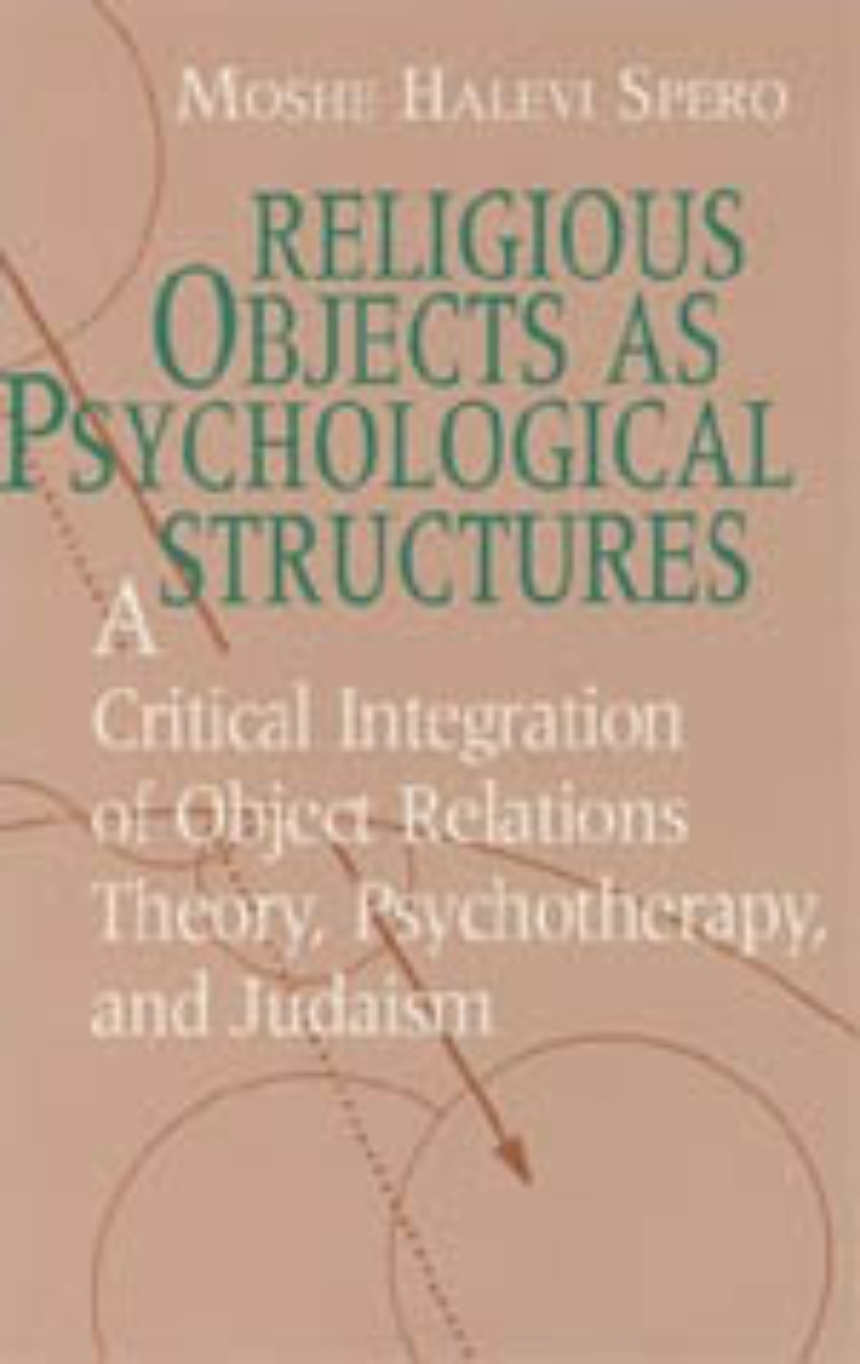Religious Objects as Psychological Structures
In this original work, Moshe Halevi Spero makes a two-pronged effort to integrate the psychological and religious perspectives of contemporary psychoanalytic object relations theory with the system of Jewish ethics known as Halakhah. Religious Objects as Psychological Structures represents the first comprehensive theoretical and clinical integration of psychology and Judaism within the larger understanding of the religious nature of psychotherapy and the psychotherapeutic nature of religion.
By constructing a halakhic metapsychology within which psychological phenomena can be given specific halakhic identities, Spero arrives at a unique perspective on the development of religious objects and God representations. He traces two lines of development: one for relationships between humans, anthropocentric, and another for relationships between God and humans, deocentric. The second aspect of his argument is that these two distinct but parallel lines allow one to conceptualize the revolutionary possibility of transference displacements—the shift of religious symbology—not only from interpersonal relationships onto the God concept (Freud’s model) but also from an objective human-God relationship onto interpersonal relationships. Filled with clinical as well as theoretical illustrations, Spero’s work is a rich resource for both the religious patient and the religious therapist.
In the last few decades, a great deal of literature has been written on the relationship between theology and psychotherapy; none of this work, however, has addressed its subject using Judaism as a point of reference. Spero successfully takes up the task of bridging this gap in previous scholarship.
By constructing a halakhic metapsychology within which psychological phenomena can be given specific halakhic identities, Spero arrives at a unique perspective on the development of religious objects and God representations. He traces two lines of development: one for relationships between humans, anthropocentric, and another for relationships between God and humans, deocentric. The second aspect of his argument is that these two distinct but parallel lines allow one to conceptualize the revolutionary possibility of transference displacements—the shift of religious symbology—not only from interpersonal relationships onto the God concept (Freud’s model) but also from an objective human-God relationship onto interpersonal relationships. Filled with clinical as well as theoretical illustrations, Spero’s work is a rich resource for both the religious patient and the religious therapist.
In the last few decades, a great deal of literature has been written on the relationship between theology and psychotherapy; none of this work, however, has addressed its subject using Judaism as a point of reference. Spero successfully takes up the task of bridging this gap in previous scholarship.
Table of Contents
Preface
Introduction
1. Psychology and Religious Belief at the Watershed
2. Developments in the Psychology-Judaism Literature
3. The Psychologistic Approach to the Image of God
4. The Halakhic Metapsychology
5. A Model for Anthropocentric and Deocentric Dimensions of Psychological Experience
6. Clinical Illustrations
7. Final Considerations on God as Structure
Epilogue
List of Abbreviations
Notes
References
Index
Introduction
1. Psychology and Religious Belief at the Watershed
2. Developments in the Psychology-Judaism Literature
3. The Psychologistic Approach to the Image of God
4. The Halakhic Metapsychology
5. A Model for Anthropocentric and Deocentric Dimensions of Psychological Experience
6. Clinical Illustrations
7. Final Considerations on God as Structure
Epilogue
List of Abbreviations
Notes
References
Index
